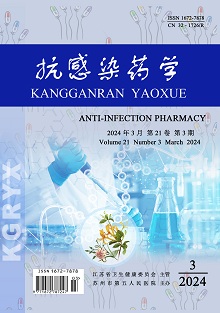LUO Ting-ting, JIAO Min, YUAN He-xia, LI Hong-jian, NIU Ming-hui, YU Lu-hai
Objective: To evaluate and compare the efficacy and safety of meropenem generic drug and innovator drug in patients with severe pneumonia based on the propensity score matching (PSM) method, and provide reference for the clinical medication of patients with severe pneumonia. Methods: A total of 612 patients with severe pneumonia admitted to the People's Hospital of the Xinjiang Uygur Autonomous Region from November 2016 to November 2020 who used meropenem generic drug or innovator drug were selected as the research objects, and divided into the generic drug group and innovator drug group based on the drugs. The information of the two groups of patients, such as age, gender, race, medication status, underlying diseases, clinical outcomes, etiological examination results, change in infection indicator levels, etc., was collected, and PSM was performed, and then the consistency of meropenem generic drug and innovator drug was evaluated and compared. Results: After screening, 330 of 612 cases with severe pneumonia met the inclusion criteria, including 109 cases in the innovator drug group and 221 cases in the generic drug group. After PSM was performed at a ratio of 1:1, there were 96 patients in both groups. Before PSM, there were no significant differences in general conditions of patients such as gender, race, course and administration of meropenem, concomitant medications, underlying diseases, and number of pathogenic bacteria between the two groups (P>0.05). After PSM, there was also no significant difference in said general conditions between the two groups (P>0.05); before and after PSM, there were no statistically significant differences in the clinical response rate, bacterial clearance rate, WBC count, C-reactive protein level, neutrophil percentage, procalcitonin level and other infection indicators between the two groups (P>0.05); before and after PSM, adverse drug reactions (ADRs) occurred in only 2 patients in the generic drug group, while no ADRs occurred in the innovator drug group. There was no statistically significant difference in the incidence of ADRs between the two groups (P>0.05). Conclusion: The efficacy and safety of meropenem generic drugs are not significantly different from the meropenem innovator drugs in the treatment of patients with severe pneumonia, with good consistency between them.
